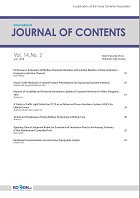- Log In/Sign Up
- P-ISSN1738-6764
- E-ISSN2093-7504
- KCI
 ISSN : 1738-6764
ISSN : 1738-6764
Vol.4 No.3
Abstract
The Korean life insurance industry has undergone profound changes, such as the beginning of the variable insurance in July 2001 and the bancassurance enforcement in August 2003. However, little empirical research has analyzed data that includes the bancassurance of life insurance companies operating in Korea. In response to this lack of research, this paper applies DEA (data envelopment analysis) models to measure and decompose their efficiency. We discovered that life insurance companies operating in Korea are a little different in their composition ratio of inputs and outputs, due to the increased variety of distribution channels and new products. We provided efficiency scores, return to scale, and reference frequencies. We also decomposed CCR, BCC, and SBM efficiency into scale efficiency and MIX efficiency. So, we try to investigate whether the sources of inefficiency were caused by the inefficient operation of DMU, disadvantageous conditions, the difference of the composition ratio in inputs and outputs with reference sets, or any combination of the above. Most companies in the sample display had either constant or decreasing returns to scale. The efficiency rankings were less consistent among models and efficient DMUs. In response to this problem, we used the super-efficiency model to rank them and then compared the rankings of the DMUs among the various models. It was also concluded that the availability of panel data, rather than cross-sectional data, would greatly improve the validity of the efficiency estimates.
Abstract
The purpose of this paper is to put forward a conceptual framework for understanding factors shaping the nature of the relationship marketing using the case study. Through this research, I can suggest it. Companies may monitor customer satisfaction by using questionnaires, general comments, customer complaints, online surveys, suggestion boxes, and personal interviews. The main purpose is to keep up to date with the needs of customers in order to retain them by creating the relationship it wants with the customers. Relationship Marketing is quite expensive, especially, in the initial period. Therefore, effective relationship marketing requires marketers to adopt affordable and practical and profitable approaches that give room to low costs without compromising quality of the product.
Abstract
The purpose of this paper is to attempt the analysis of the 'Positivist' School and the 'Interpretative' School to the Relationship between Theory and Method, Using examples from Criminological Research. The differences between approach of the positivist school and interpretative school are often made very difficult to make an approach. What are more to focus on are the relationships between quantitative research and positivism and qualitative research and interpretative paradigms are often presented as essential connections. Therefore, it is a lot more difficult to imply an appropriate research method and process depends on the subject and field of the research topic. The differences between types of research and also the connections which are made between types of research and theoretical paradigms portray a very simple picture. The danger of this is that two readily available set of research methods and assuming that positivist and interpretative research style represent competing approaches and also that they present 'either-or' alternatives as to strategies of research. For example, in some instances positivist and interpretative's methods do represent alternatives but in some case, positivist and interprativist each other can complement about each other's defects in terms of use of methodology. Though depending according to the specialist of the topic, it needs sensitivity to the potentials and the contributions of different styles of data and different methods of information collection and analysis to the criminological issues under test and to the theoretical questions being asked of them.
Abstract
To obtain realistic performance measures for wireless networks, one should consider changes in performance due to failure related behavior. In performability analysis, simultaneous consideration is given to both pure performance and performance with failure measures. SRN is an extension of stochastic Petri nets and provides compact modeling facilities for system analysis. In this paper, a new methodology to model and analyze performability based on stochastic reward nets (SRN) is presented. Composite performance and availability SRN models for wireless handoff schemes are developed and then these models are decomposed hierarchically. The SRN models can yield measures of interest such as blocking and dropping probabilities. These measures are expressed in terms of the expected values of reward rate functions for SRNs. Numerical results show the accuracy of the hierarchical model. The key contribution of this paper constitutes the Petri nets modeling techniques instead of complicate numerical analysis of Markov chains and easy way of performance analysis for channel allocation under SRN reward concepts.
Abstract
Fast handover is essential to support seamless multicast service in MIPv6. To reduce handover latency of multicast, there are two handover mechanisms, one is M-FMIP that prepares fast L3 handover before L2 handover and the other is M-HMIP that performs local area mobile multicast management. This paper proposes M-FHMIP that integrates an advantage of M-FMIP and M-HMIP, and analyzes the multicast handover latency.
Abstract
Recently, almost games are using the 3D environment. Therefore, it required strongly that well-structured 3D engine or tools for development of some complicate 3D applications efficiently. In this paper, we design and implement a 3D engine (PLay engine) using the DirectX 9 SDK of the Microsoft corporation. The PLay engine has independent module structure, which has object oriented characteristics, and has not only 3D rendering functions but efficient algorithms. Moreover, we implement some tools what has compatibility with our engine for convenience. Therefore, it helps development of a 3D application easily and efficiently. We also describe each module with 2-layer structure, and each tool with compatible module, and make a simple game using PLay engine for testify.
